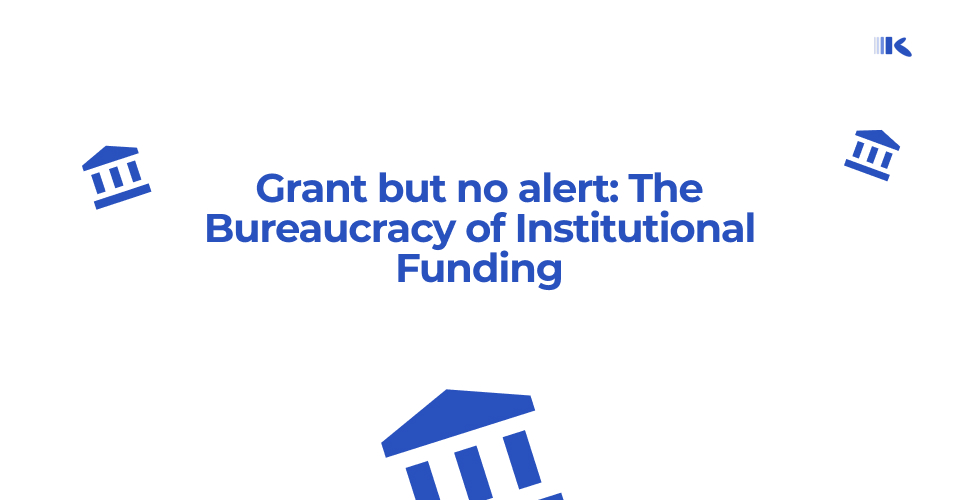Somewhere in West Africa, a young non-profit founder refreshes her email for the third time that day. It’s been months since her organization was announced as a recipient of a $10,000 grant, but there’s still no credit alert. Only congratulatory tweets, paperwork loops, and the growing pressure from unpaid vendors. She’s not alone.
Across the continent, non-profit organizations are familiar with the promises of grant funding, but what many outsiders don’t see is the long, winding delay between the win and the wire transfer. For many non-profit organizations across Africa, grants are more than money, they’re lifelines for projects and change, from feeding displaced families to keeping children in schools and delivering healthcare to remote communities. These organizations run on urgency but what should be a simple transaction often becomes a slow and exhausting journey through bureaucracy.
When Money Moves Slower Than the Mission
In theory, institutional funding is a lifeline for changemakers. In practice, it often becomes a test of resilience. Funds are released in tranches sometimes quarterly, other times “upon submission of midterm reports,” and occasionally, not at all. In the meantime, recipients must juggle implementation, compliance, and communication with funders who often operate from different time zones and mindsets.
The grant application to disbursement cycle is far longer than many expect. A guide from GrantsDatabase.org outlines realistic NGO grant timelines in West Africa, where the average cycle from application to disbursement ranges from 6 to 12 months. This includes stages for:
- Application drafting and submission
- Review, shortlisting, and interviews
- Notification of award
- Due diligence, contract review, and documentation
- Conditional disbursement (often in tranches)
Sometimes the “$10,000 grant” that was awarded turns out to be released in small milestone-based payments over 18 to 24 months, often tied to reporting outputs or impact assessments that they themselves require funding to produce.
A Look at the Numbers
According to the Global Fund Audit Report on Grant Implementation in Western and Central Africa, significant delays in grant disbursements to African countries have been attributed to bottlenecks such as incomplete documentation, procurement inefficiencies, and poor communication; in some cases, over 40 percent of intended disbursements were delayed by more than six months.
It’s More Than a Delay—It’s a Broken System
Some funders blame administrative processes or currency restrictions. Others point to due diligence checks. While these issues matter, the lack of transparency only makes things worse. Founders are rarely given clear timelines or contingency plans. For many, there’s no escalation pathway, just silence.
Worse, some grants are disbursed in non-cash equivalents like digital vouchers, airtime credits, or conditional reimbursements. These don’t pay for transport. They don’t cover internet costs and they definitely don’t help when a project is already live.
One founder described her experience this way: “They wanted a 10-page monthly report, receipts for every item, and impact data weekly, but the first payment came five months late. We had to borrow to start the project.”
Where Do We Go From Here?
For many non-profit organizations across Africa, grants are more than money, they’re lifelines. Yet, what should be a simple transaction often becomes a slow, exhausting battle with bureaucracy. The press releases come fast, but the funding moves at a crawl.
While donors and development agencies speak of impact and innovation, grassroots nonprofits often face a different reality. They must navigate a maze of conditions, installment-based funding, delayed disbursements, and unclear timelines. When funding is delayed, progress stalls and the organizations’ work is directly affected.
It’s not just about operational hiccups. It’s about trust. It’s about sustainability. It’s about dignity. What’s the use of a $50,000 grant that arrives in trickles over 18 months when the program it was meant to support was urgent 6 months ago?
Toward Transparency and Timeliness
What would it look like if donors and institutional funders communicated timelines clearly? What if first disbursements were timed to help organizations launch, rather than stall?
The Humanitarian Outcomes Efficiency Report showcases alternatives like the Start Fund—a rapid response funding mechanism that disburses emergency funds within 72 hours of crisis onset.
More than speed, NGOs want clarity. Defined expectations, flexible reporting structures, and donor trust in implementer capacity can go a long way in closing this crucial gap between the win and the wire transfer.
Until institutional funders match their lofty pledges with prompt, transparent funding systems, non-profits will remain stuck in a cycle of applying, waiting, adjusting, and sometimes giving up. If money truly follows intent, then let that intent be honest, swift, and empowering.
Africa’s changemakers don’t need another promise. They need funding that arrives when the work still matters.
References
The Hidden Stress of Grant Funding in AfricaGrant implementation in Western and Central Africa (WCA)
Humanitarian Outcomes Efficiency Report
GrantsDatabase.org – Realistic Grant Timelines
eNCA (South Africa) – NGO Funding Crisis
Disparities in Funding for African NGO’s Report
Breaking Barriers: Challenges in Accessing Funding for African NGOs
